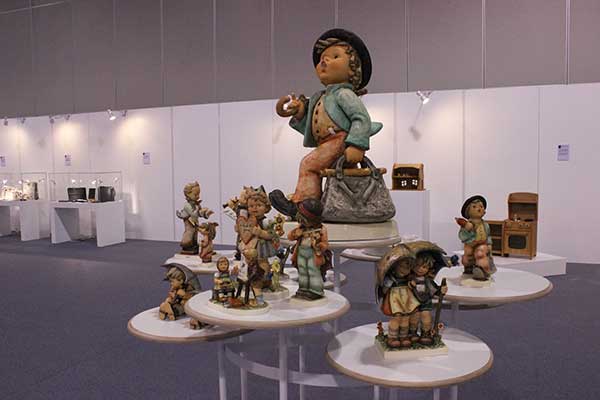
The works he produced were acquired by the Palace Museum in Beijing in 2011.
As of now, it takes him more than a year to make a bowl of hide-like lacquerware, but Gan believes it is worth it to keep polishing his skills and working on new ideas.
"Ancient hide-like lacquerware is generally dull in color and its texture is not that clear, so we have to improve on that," says Gan, giving an example of why his work is not yet done.
"When you see the items (he makes), they must have an ancient feel. But, beyond that, I have to blend in my own understanding and feelings and give the items a modern aesthetic."
Increasingly, professionals who devote themselves to reviving intangible cultural heritage are going beyond traditional techniques. For them, intangible cultural heritage can also create top-end luxury items.
At least, that is what was evident in Macao recently.
Feng Jie, 71, from Jiangxi's provincial capital Nanchang, also in the country's east, is well-known as a master for his technique of drawing on porcelain plates. He says one of the exhibits was priced at 2 million yuan ($308,000).
"So people should not be satisfied with just being craftsman. We should encourage the development of more masters."
Though the local government in Nanchang has set up an institution for Feng to use as an incubator to train youngsters, Feng says the quality of students is not satisfactory.
He says that today's young are generally too fickle to take up the art seriously.
"To master traditional skills, you have to read, practice writing, and nurture a comprehensive understanding of the art."
He adds the relatively low wages earned from the art compared with other careers is another hurdle to attracting talent.
So, it seems that a better option may be to create a business which can blend traditional skills with modern industry.
And, some people at the expo are making attempts in this direction.
For instance, Zhang Shuyang, a Shanghai-based veteran antique collector, set up a luxury watch studio where he uses porcelain to make dials and elements from ancient bronze mirror to make the watch movements.
Explaining what he hopes to achieve, Zhang says: "It (the piece) has to be original, unique, handmade and be made by someone with the highest skills.
"When you mimic others' work, you cannot call it fine art. Consequently, I put my own DNA into the products, to combine tradition and modern design."
Now, several masters from China's porcelain hub of Jingdezhen in Jiangxi, have joined him.
He also says: "It (the product) has to be genuinely Chinese. Though watches come from the West, we don't have to follow them. Our traditional craftsmanship can provide lots of inspiration."
Still, a dialogue between East and West probably helps improve traditional craftsmanship on both sides.
For instance, Homemade in Germany, an exhibition that was held in Shanghai last year, and returned to China for the recent Macao expo, can offer ideas to Chinese industry.
The exhibition, which comprises more than 150 companies from Germany, aims to promote handcrafts for everyday use.
The oldest German company exhibiting products at the event is more than 300 years old, and many of the others are family-run businesses.
Matthias Philipp, the curator of the exhibition, says handmade crafts are highly regarded in his country despite facing stiff competition from mass-produced goods.
"People in Germany say, 'I'd rather buy something more expensive, but which is more authentic.' They don't want to buy mass-produced items," he says.
"In a world of globalization and digitalization, people value items made by hand. You can make a handicraft modern by adding something new," he says.
"They (handicrafts) are regarded as a luxury because luxury refers to something that is individually designed and is unique."
As an example, he talks of high-end German pens made using traditional techniques and others made using more modern methods, though both are traditional brands.
"They (both brands) can coexist. But, if you want to keep tradition alive, you have to somehow bring it into the 21st century," he says.


















































